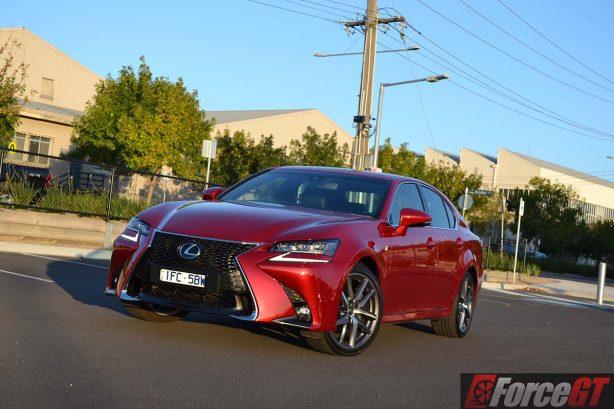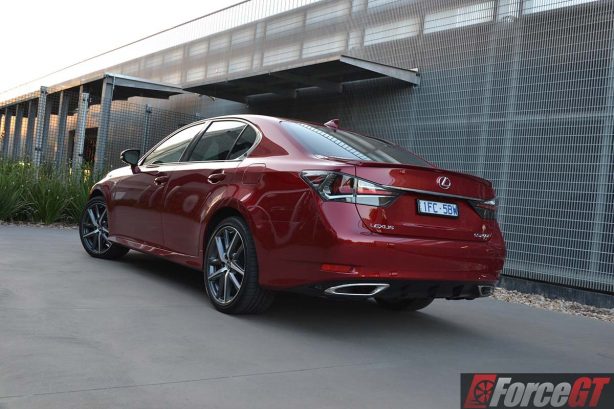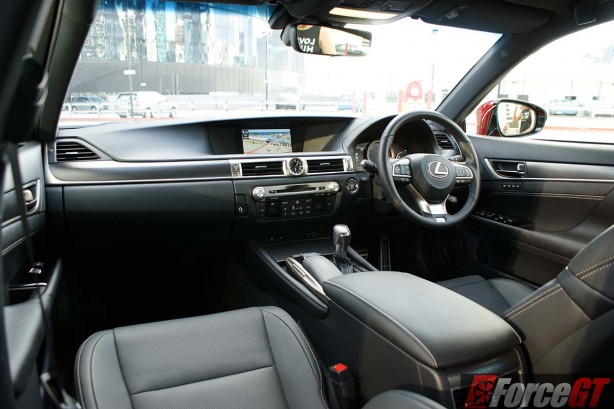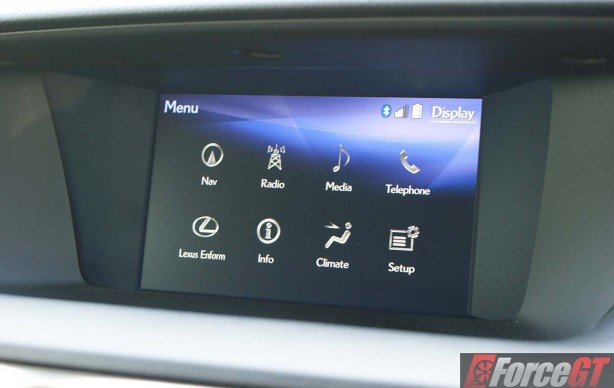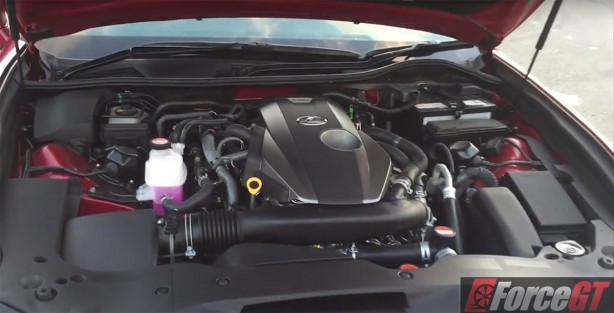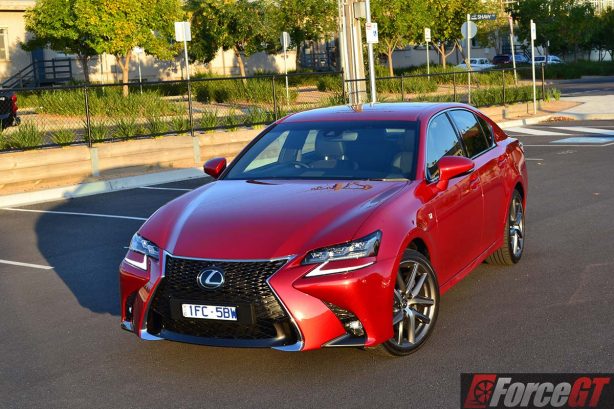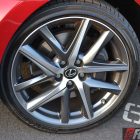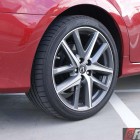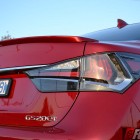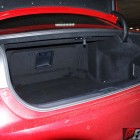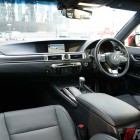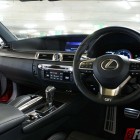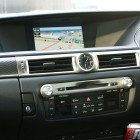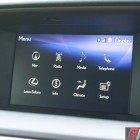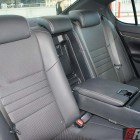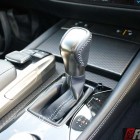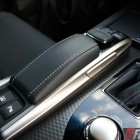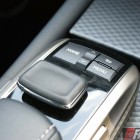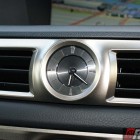Japanese luxury carmaker, Lexus has expanded their mid-sized sports sedan range with the all new GS 200t. Boasting a more refined interior, plethora of technological upgrades and impressive dynamics, the all-new GS competes head-to-head with the best in the luxury car sector.
The GS 200t made its entrance late in 2015 and replaces the outgoing GS 250, making it the new entry level model in the range. The new model is available in Luxury or F Sport spec.
The Luxury variant starts from $75,000 plus on-road costs and comes standard with 17-inch alloy wheels, an 8-inch navigation system, leather-accented seats and a 12 speaker audio system. There is just one enhancement pack available for the GS 200t Luxury, which retails for $4500. This includes a moonroof and 18-inch alloy wheels.
The F Sport tested for this review starts from $83,000 and comes standard with 19-inch wheels, LED headlamps, adaptive dampers, blind spot monitoring with rear cross traffic alert and sports front seats with memory function. Two additional enhancement packs are available on the F Sport.
The first pack retails for $4,500 and includes a 17-speaker Mark Levinson audio system, 12.3-inch multimedia display and Head-Up Display (HUD). The second package includes all the features of the first pack and adds a moonroof for an additional $2,500.
Being a mid-life facelift model, the GS 200t gains only minor body and interior tweaks over its predecessor.
The front benefits from an angular ‘spindle’ grille design and upgraded triple L-motif headlights. The rear is less extravagant. The taillights have been revised with new light graphics emphasising Lexus’s L-motive even further, along with new exhaust finishers and a slightly revised bumper.
The new 19-inch LFA inspired alloy wheels and sports suspension give it a more prominent stance on the road and ties the whole ensemble together.
Dropping the V6 for the more efficient 4-cylinder turbo shaves 15kg off the total weight setting it at 1,705kg. It is 4,880mm long, 1,840 wide and similar to other GS models retains its 1,455mm height.
The interior defines luxury, every surface well-crafted and enveloped in high quality materials.
A mix of leather and Naguri-style aluminium cover on the door trim and dashboard, along with soft-touch materials for other surfaces.
The seats are comfortable, providing 10 levels of adjustment including adjustable bolsters for greater lateral support. The cabin is spacious with generous leg and headroom for occupants.
The F Sport steering wheel also takes cues from the LFA featuring a three spoke design and integrated vehicle controls. The wheel can also be adjusted for tilt and reach.
The infotainment system is operated via the ‘Remote Touch’ interface on the centre console. The interface itself, looks and feels like a mini computer mouse and implements haptic feedback to not only give a feeling of a virtual button but also lock the joystick onto onscreen visual elements.
I found the Remote Touch to be very easy to use and made navigating the menu items a breeze. To me, it was more intuitive than BMW’s iDrive and Audi’s remote dial.
The instrumentation is a mix of analogue and digital gauges. There is a 4.2-inch display serving up miscellaneous driving information along with a digital tachometer that changes the theme based on the drive mode you have enabled. Speed is displayed numerically in the centre of the dial, while an analogue fuel/temp gauge sits to the right.
At the heart of the GS 200t is a 2.0-litre four-cylinder turbocharged petrol engine developing 180kW and 350Nm of torque. This is the same engine as used in the NX, IS and RC range, but comes as a first for the GS. The engine is of smaller capacity but it provides greater fuel economy along with a 26kW power gain over the 2.5-litre V6 engine it replaces.
At idle, it’s quiet and unassuming. Give it a bit of throttle and you’ll unleash a great aural experience, with a nice growl as revs climb.
Despite making more power, the GS feels slow off the line. It leaves you wanting more even with pedal to the floor, as though it has been tuned for soft starts despite Lexus’s claim of peak torque sitting above 1,650rpm.
Nevertheless, acceleration is still an improvement and competitive with rivals. The extra power is channelled through an 8-speed automatic helping to slingshot the large sedan to 100km/h in 7.3 seconds; 1.3 seconds faster than the GS 250.
The brakes are progressive, strong and suitably matched to the vehicle. The steering is light and lacks feedback but this is typical of most vehicles with electric power steering setups.
The F Sport gains adjustable dampers over the Luxury spec, providing the best of both worlds; a hardened ride for enthusiastic driving or pleasurably soft settings for everyday driving.
There are four drive modes available: Eco, Normal Sport S and Sport S+. Eco and Normal are for everyday driving while the Sport modes tweaks the vehicle’s dynamics characteristics. The Sport S mode alters the powertrain for slightly faster shifting and more spirited throttle-mapping, while the S+ mode goes a step further by firming up the dampers and altering the transmission’s shift points for greater response and acceleration.
Through corners, the front end tracks well and the car as a whole feels very composed. Pushed too hard and the 5 Series rival will run a little wide but backing of the throttle will put it back in line.
I feel the engine is under-powered for the size and weight of the vehicle. It does fairly well for daily driving but lacks the much needed torque when driven aggressively. Kickshifting will do little to help due to the slow gear changes, you really need to pre-emptively shift a couple gears down manually to be able to keep your speed respectable through the corners.
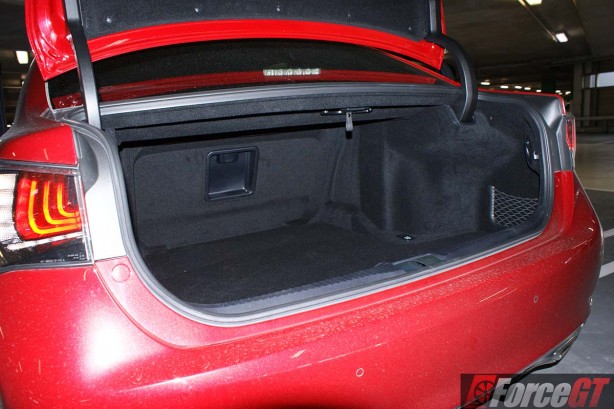
For everyday driving, the engine and boot space is decent at 520-litres but there is no split-fold feature for the rear seats. There is however, a ski-port mounted in the armrest for extra long items.
Improved engine output is only one of the benefits of the turbo-four. The GS 200t beats the GS 250 with a combined fuel economy of 8.0L/100km; 1.3L/100km better than the outgoing model. In testing we achieved 9.4L/100km, which represents a good mix of city and freeway driving.
Even at 9.4L/100km, with the 66-litre tank we could expect around 700km range from a full tank.
Verdict
Design and Comfort: 9.0/10
Performance and Handling: 7.0/10
Quality: 9.0/10
Economy: 8.0/10
Equipment and Features: 9.0/10
Personally, I like the Lexus GS 200t. While not a speed demon, it makes up for it by being a comfortable cruiser with a spacious interior. It isn’t overly flashy but you’ll feel like a boss driving it around.
Badge snobs will lament it doesn’t carry the badge-cred of its German competition, but its lower asking price and impressive list of standard equipment easily put it ahead of the “poverty pack” German luxury cars.
It is definitely a car you should check out if you are in the market for one.
Pros
- High quality interior
- Refined handling
- Infotainment system full featured
- Quiet interior
Cons
- Numb throttle response
- Heavy
2016 Lexus GS200t F Sport pricing and specification:
| Price (Excl. on-road costs): | From: $75,000 – $83,000 As Tested: $83,000
|
| Country of Origin: | Japan |
| Warranty: | 4 years / 100,000 km |
| Service Intervals: | 12 months/15,000 km |
| Engine: | 2.0-litre four-cylinder turbo: 180kW @ 5,800rpm, 350Nm @ 1,650-4,400rpm |
| Transmission: | 8-speed Automatic |
| Drivetrain: | Rear Wheel Drive |
| Fuel Consumption (L/100km): | Claimed: 8.0 (combined) / 11.2 (urban) Test: 9.4 |
| Fuel Tank Capacity (L): | 66 |
| Body: | Sedan |
| Seats: | 5 |
| Safety: | ANCAP: Not Tested, 8 Airbags, ESC, ABS, reverse camera, pre-collision emergency braking |
| Dimensions (L/W/H/W-B) mm: | 4,880/1,840/1,455/2,850 |
| Tare Mass (kg): | 1,705 |
| Entertainment: | 8″ navigation display, 12 speakers |
| Towing Capacity (kg): | Braked: 1,600/Unbraked: 750 |
Competitors: BMW 5 Series, Audi A6, Infiniti Q70, Mercedes-Benz E-Class, Jaguar XF
 ForceGT.com Car News, Car Reviews, Video Reviews, Tuning and much more.
ForceGT.com Car News, Car Reviews, Video Reviews, Tuning and much more. 